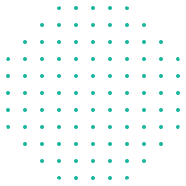SER and ESTAR
Before diving into the difference between ser and estar, let’s review their conjugations in the present tense so you can easily remember them.
Conjugations of ser (present tense):
I am – Yo soy
You are – Tú eres
He/She/You (formal) is – Él/ Ella/ Usted es
We are – Nosotros somos
You all are – Ustedes son
They are – Ellos/ Ellas son
Conjugations of estar (present tense):
I am – Yo estoy
You are – Tú estás
He/She/You (formal) is – Él/ Ella/Usted está
We are – Nosotros estamos
You all are – Ustedes están
They are – Ellos están
In Spanish, the distinction between the verbs ser and estar can be difficult to understand for students, especially those learning Dominican Spanish. These two verbs, although they sometimes seem interchangeable, have different meanings depending on the context. In the Dominican Republic, as in other Spanish-speaking countries, the use of ser and estar is related to the nature of the situation, whether the characteristics are permanent or temporary, and emotions.
Ser: To Describe Permanent Characteristics. In most cases, we use ser to talk about characteristics that are considered permanent or essential, meaning those that define someone or something consistently. Here are some typical examples in a Dominican context:
- La gente dominicana es muy alegre. (Dominican people are very joyful).
- El merengue es el baile típico de la República Dominicana. (Merengue is the typical dance of the Dominican Republic).
- Punta Cana es un destino turístico popular. (Punta Cana is a popular tourist destination).
- Yo soy dominicano. (I am Dominican).
- Muchos peloteros son de la República Dominicana. (Many baseball players are from the Dominican Republic).
Estar is used more for temporary states or conditions, changes in state, or situations that are not permanent.
Let’s look at some examples in a Dominican context:
- Hoy estoy cansado porque fui a la playa en Boca Chica. (Today I am tired because I went to the beach in Boca Chica).
- La comida está lista. (The food is ready).
- El Malecón está lleno de gente los domingos. (The Malecón is full of people on Sundays).
- Muchos dominicanos están en Nueva York. (Many Dominicans are in New York).
- Yo estoy trabajando mucho. (I am working a lot).
Dominican Expressions with Ser and Estar
In addition to the traditional uses of ser and estar, in the Dominican Republic, there are several expressions that show how these verbs are used in everyday speech:
- To be cool (ser chévere).
- To be broke (estar en olla).
- To be overly happy (estar pasado de contento).
- To be a great person or awesome (Ser un bacano).
- To be daydreaming or lost in thought (Estar en la luna).
Use ser when you talk about something that defines a person or thing consistently, such as character, nationality, or profession.
Example: Juan is Dominican (Juan es dominicano).
Use estar when describing moods, temporary conditions, or specific locations.
Example: Juan is in Santiago (Juan está en Santiago).





